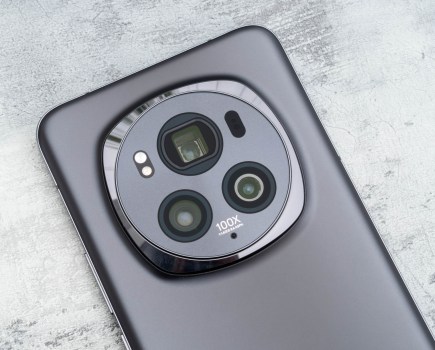Fujifilm X-E3 – Image quality
The image quality results from the X-E3 are identical to those generated by the X-Pro2, X-T2 and X-T20. This isn’t a huge shock given that the X-E3 uses the same X-Trans CMOS III sensor in combination with Fujifilm’s X Processor Pro.
The fact that the level of detail recorded by the X-E3’s sensor is comparable to those of the X-Pro2 and X-T2 models makes it a suitable backup or secondary camera for anyone who already owns one of these models but admires the X-E3’s design and styling. The noise performance is impressive too, with ISO 3200 and ISO 6400 being eminently usable when working in poor lighting conditions.
Resolution
With Fujifilm’s new RAW conversion system ‘Fujifilm X RAW Studio’ still in development, and no Adobe support for the X-E3’s RAW files at the time of testing, I used Silkypix software (Ver.4.2.8.0) to convert them.
The X-E3 resolves a maximum of 3400l/ph between ISO 100 and ISO 400, with resolution dropping slightly at ISO 800 to 3200l/ph. A similarly high level of detail is preserved beyond ISO 800, with 3200l/ph being resolved at ISO 1600 and 3000l/ph at ISO 3200.
Detail drops below 3000l/ph when the sensitivity is pushed beyond ISO 6400. The detail resolved at ISO 12,800 (2800l/ph) remains high, and the sensor even manages to resolve 2400l/ph when shooting in the expanded ISO 51,200 setting.

Fujifilm X-E3, RAW, ISO 100. Multiply the number below the line by 200 for the resolution in lines/picture height

Fujifilm X-E3, RAW, ISO 800. Multiply the number below the line by 200 for the resolution in lines/picture height

Fujifilm X-E3, RAW, ISO 6400. Multiply the number below the line by 200 for the resolution in lines/picture height

Fujifilm X-E3, RAW, ISO 51200. Multiply the number below the line by 200 for the resolution in lines/picture height
Noise
The X-T20 is the fifth X-series model we’ve tested with a 24.3-megapixel X-Trans CMOS III sensor. Set the sensitivity between ISO 100 and ISO 800, and you’ll be rewarded with images that feature barely a hint of noise. Push up to ISO 1600 and you’ll begin to see some luminance noise appearing, but this is easy to remove in post.
Luminance noise slowly starts to become more apparent in images at ISO 3200 and 6400, but these settings are all still usable. I’d happily set ISO 6400 as my upper limit when using the X-E3’s Auto ISO setting, and would probably push as far as ISO 12,800 if it meant I captured a subject sharp over it being blurred. The higher ISO 25,600 and ISO 51,200 settings see a drop in saturation and are best avoided.

Fujifilm X-E3, RAW, ISO 100

Fujifilm X-E3, RAW, ISO 800

Fujifilm X-E3, RAW, ISO 6400

Fujifilm X-E3, RAW, ISO 12800

Fujifilm X-E3, RAW, ISO 25600

Fujifilm X-E3, RAW, ISO 51200
Should I buy the Fujifilm X-E3?
With the Fujifilm X-E3, Fujifilm has made a camera that advances on the appealing aesthetics of its predecessors. It hosts Fujifilm’s most up-to-date sensor and processor technology and it’s this pairing that sees it offer image quality and performance that’s on par with Fujifilm’s X-Pro2 and X-T2.
Those who love its retro charm and classic styling, but can’t justify spending £750 more for the X-Pro2, are likely to be tempted. Fundamentally, the Fujifilm X-E3 is a slimmed-down version of the X-Pro2, rather like the X-T20 is to its senior cousin, the X-T2.
However, there are a few questions you’ll want to ask yourself – the key one being: do I need a tilt-screen? If the answer to this is yes, and you’d prefer a central viewfinder with a DSLR-like design that feels better in the hand when it’s used with larger zoom lenses, the Fujifilm X-T20 or X-T2 would make a better choice.
The fact that the X-T20 is a few months older also means you can pick it up slightly cheaper and put the money you save towards a new lens. The newly developed image recognition algorithm the Fujifilm X-E3 debuts is a welcome update, but I suspect Fujifilm will make this available to X-T20 users via a firmware in the future – it’s only a matter of time.
In use the Fujifilm X-E3 offers a very satisfying user experience. It takes a bit of time to get used to the fact there’s no four-way controller or built-in flash, but the customisable touch functions are excellent and it highlights that Fujifilm’s touchscreen functionality is getting better with each new release.
The addition of Bluetooth makes the process of pairing it with a mobile device slightly easier, but users will want to be be aware that frequent use of Wi-Fi will drain the battery fairly quickly. A spare battery or USB power bank will be essential for longer periods of shooting.
As well as the above, the Fujifilm X-E3 presents all the advanced controls those progressing from a smartphone will want. It’s a great walk-around camera that oozes style and class for fashion-conscious enthusiasts too. The Fujifilm X-E3 is right up there as one of the finest vintage-inspired mirrorless cameras on the market today for under £1000.








